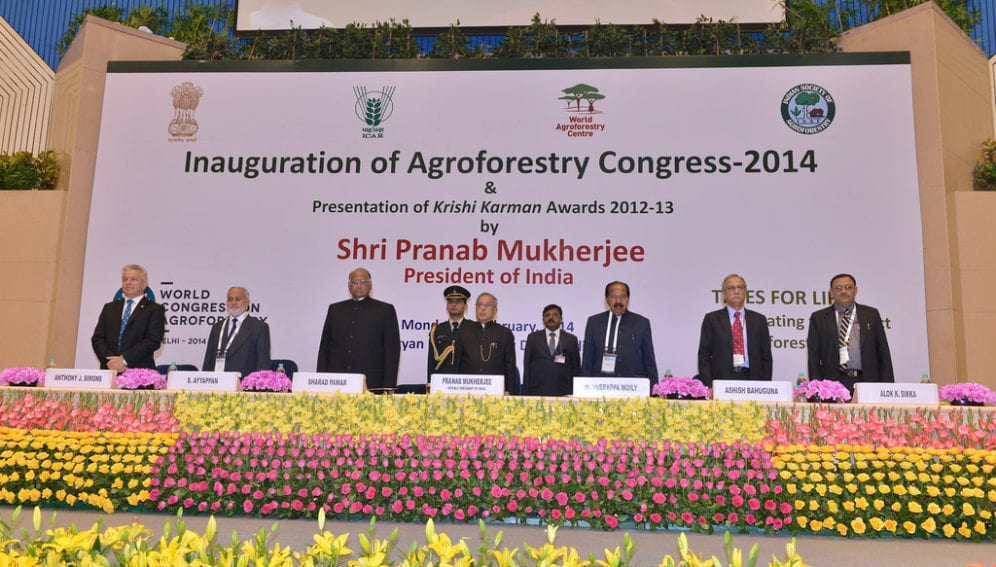By: T.V. Padma
Send to a friend
The details you provide on this page will not be used to send unsolicited email, and will not be sold to a 3rd party. See privacy policy.
[NEW DELHI] India’s first national agro-forestry policy, unveiled this month, focuses on improving the productivity of small and marginal farmers and providing them sustainable livelihoods.
Under the policy, investments will be made in research, extension and capacity building; and promoting agro-forestry for renewable energy and sustainable development projects, Ashish Bahuguna, secretary, department of agricultural cooperation, told the World Congress on Agro-forestry held in the Indian capital this week (10—14 February).
The policy envisages a national agro-forestry mission; aims to mainstream agro-forestry in agricultural policies and strategies; promote agro-forestry in integrated farming systems; and secure land tenures and build a sound data base of land records.
Long-standing agro-forestry problems that can now be addressed include poor coordination among implementation agencies; insufficient research, extension and technical support, cumbersome regulations on use of forest products; and weak market access for agro-forestry products.
“Basically, agro-forestry was not specifically any agency’s responsibility,” Bahuguna said. That left the 13.5 million hectares that India has under agro-forestry in “bits and pieces,” he said.
“The thrust is on tree-based farming systems where trees are complementary to crops, and not a substitute for them,” Rita Sharma, secretary, national advisory council for agro-forestry policy, said.
Sharma said the policy has horizontal linkages with several ongoing mega programmes, such as the natural resource management programme, and the Green India mission to improve forest cover. “We are used to working in vertical silos. We need horizontal thinking,” she said.
M. S. Swaminathan, father of India’s green revolution, said agro-forestry could help achieve food, nutrition and livelihood security in developing countries, and meet the ‘Zero Hunger Challenge’ unveiled at the Rio+ 20 summit in 2012, to ensure 100 per cent access to adequate food for all by 2025; no stunted children below two years; and 100 per cent increase in small-holder farm production.
The congress heard several case studies in which agro-forestry had helped control water-logging that threatens one-third of the world’s irrigated area, reclaim saline land and replenish the vegetative cover in arid and semi-arid areas.
Water-logging affects 6.41 million hectares of land in India, mostly around the 1,700 major and minor irrigation canals. Of these, 125,000 hectares are most critically water-logged, with one to two metres of waters before monsoon; and 1.77 million hectares are critically water logged with up to one metre of water, says Jagdish Dagar, scientist emeritus at the Central Soil Salinity Research Institute, Karnal.
Techniques such as bio-drainage, that involves growing deep-rooted trees such as eucalyptus to absorb water and transpire it through leaves, are eco-friendly as the trees increase forest cover, provide wood biomass, serve as wind breaks and also provide assured income, Dagar says.
Similarly, agro-forestry systems adopted by farmers in semi-arid lands involving the cultivation of fruit trees like mango and guava, and timber and pulpwood trees, help improve incomes, says Prasad Jasti, scientist at the Central Research Institute for Dryland Agriculture, Hyderabad.














